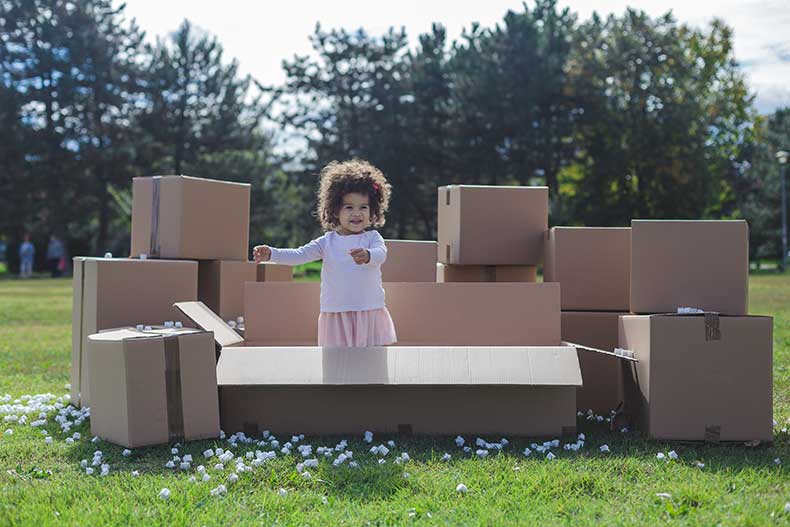
While spring can provide a lot of sunny days that are perfect for moving, the unpredictability of spring weather condition can likewise mean running into harsh weather when you least expect it. While the majority of spring storms consist of spread showers that clear right up, spring might likewise disrupt your relocation with thunderstorms and flooding, hail, or even twisters.
Ideally, you 'd have plenty of forewarning to get ready for dampness on moving day so you can load and prepare appropriately. If, however, a spring storm strikes without caution, utilize the following guidelines to guarantee that your movers and valuables weather the bad weather both while leaving and while relocating.
While Vacating Your Present Home
You may have to handle poor weather condition conditions at your existing house, your new home, or throughout the day. Use the following suggestions if a spring storm starts around the exact same time as you start moving.
Cover Your Boxes or Path
You integrate weatherproofing into your initial packing when you know to anticipate precipitation when moving. When you have not taken this action, you might look at your cardboard boxes and envision them disintegrating before you even get to the moving truck.
To prevent this problem, cover specific boxes with trash bags, cling wrap, plastic sheeting, tarpaulins, or other water resistant coverings. Additionally, if your pathway is short enough, you may be able to cover it with a canopy.
Find Your Inclement Weather Basics
As you loaded up, your harsh weather fundamentals may have become blended in with your other valuables. Before you venture out in the storm, discover all the items you would require when it comes to a severe weather condition emergency situation like a twister.
These basics may consist of battery packs for your individual electronics, a radio, 72 hours' worth of food and water, or flashlights. Ensure you know where these things are.
Set Up a Drying Station
Even if wetness doesn't penetrate your moving boxes, it can cause issues in your moving truck that might bring over into your new house. For example, a wet container can leave puddles that produce possibly dangerous slick locations on truck beds and tough flooring alike.
If you know your boxes will get damp on their method to the truck, have at least one member of your moving group stay in or near the truck with a supply of towels to dry items off as they get here.
While Moving Into Your Next House
If the storm has not eased off by the time you come to your new home, use the following standards.
Put Down Flooring Protection
Prior to you leave your current home, you should try to keep your belongings dry. As soon as you show up, your next issue is to keep the interior of your brand-new home safeguarded from the effects of undesirable wetness, consisting of water intrusion and damage.
As you start to bring in boxes, set moving blankets or other floor covering defense to soak up any water on your boxes and furnishings.
Stay Aware of Slick Surfaces
Just due to the fact that you don't need to go out in the rain anymore does not imply you don't need to handle its effects. As you move products around in your house, make sure that every member of your moving team stays alert to possible slip and fall risks.
Where possible, wipe up puddles as quickly as they form.
Unpack Damp Products
When enabled to sit uninterrupted for long durations of time, Wetness becomes most harmful. If you believe that water has actually seeped into any boxes, unpack these containers instantly. Set out any damp items to air dry, specifically if the items are made from paper or material.
Throughout the Moving Process
In addition to the time-specific pointers noted above, you must likewise utilize specific practices throughout a moving day affected by an unexpected spring storm. Utilize the following guidelines:
Check the weather report. Not only can tracking the weather condition permit you to predict the very best time to move susceptible products, however this essential step likewise makes sure that you can head to shelter must the requirement arise. Constantly focus on security over your initial timeline.
Gown inning accordance with the weather. If the weather condition changes throughout your moving day, you may need to change your wardrobe numerous times. For example, galoshes work well during active rain but might in fact motivate falls once the skies clear.
Offer yourself extra time. Once storm clouds threaten your move, plan to give yourself additional time for every single action of the procedure. You may have to take additional actions and practice more care.
If you're dealing with professional movers, work closely with the group to guarantee that everyone involved with the procedure is on the very same page as the day advances given that a storm might alter the timeline of the day considerably.
Use the tips described above in case inclement weather condition threatens to derail or postpone your move.
For expert moving assistance on any spring relocation, whether springtime brings you warm skies and temperate temperature levels or dark storm clouds, trust the specialist moving team from an expert moving and storage company.
Inspect the weather projection. Not only can tracking the weather condition permit you to forecast the best time to move vulnerable items, but this important action also ensures that you can head to shelter needs to the need develop. Dress according to the weather condition. You might require to modify your closet several times if the weather condition modifications throughout your moving day. As soon as storm clouds threaten your relocation, plan to offer yourself extra time for every step of the process.
